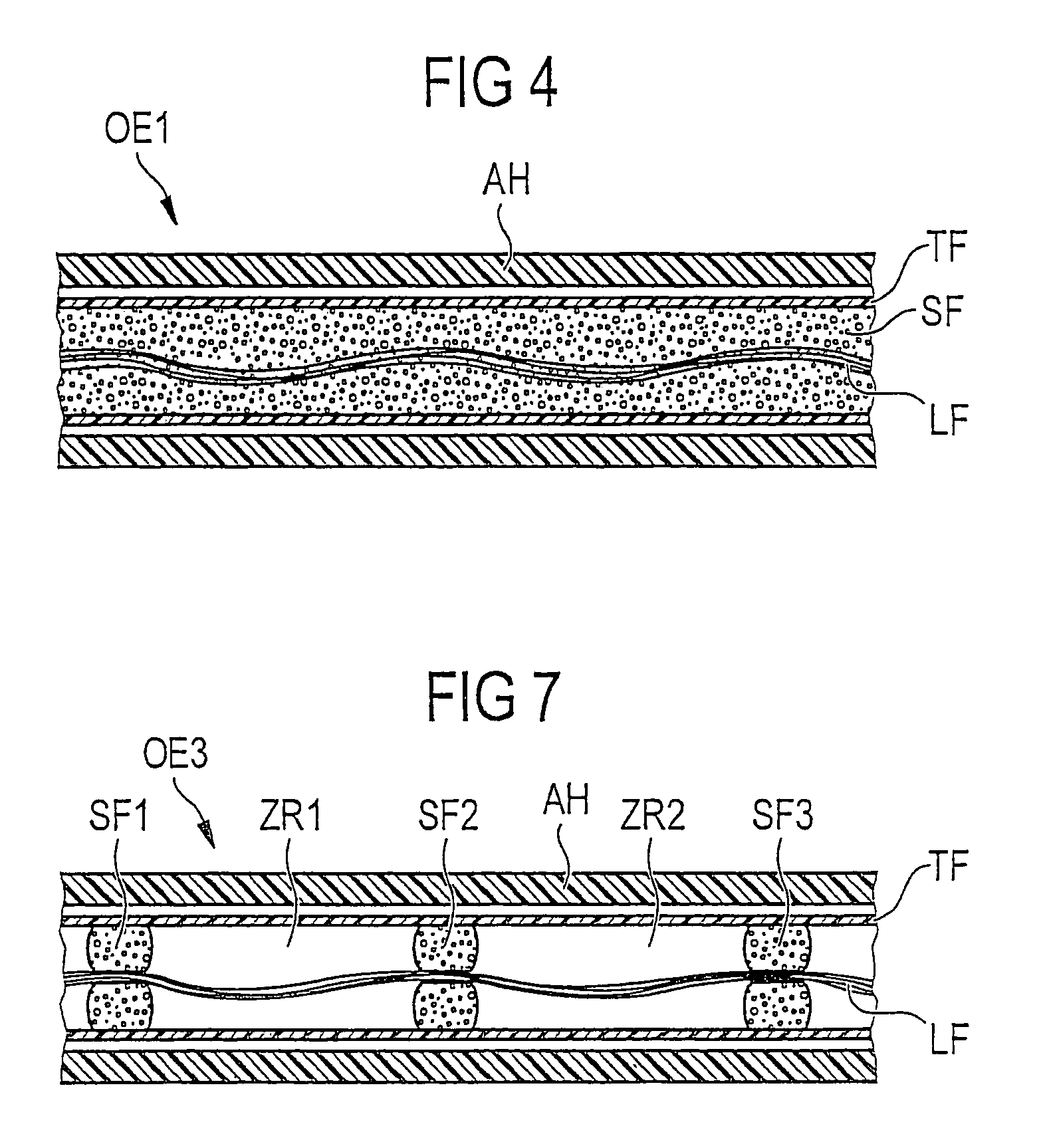Optical transmission element
a transmission element and optical technology, applied in the direction of presses, instruments, fibre mechanical structures, etc., can solve the problems of contamination, handling problems, run out or drip out,
- Summary
- Abstract
- Description
- Claims
- Application Information
AI Technical Summary
Benefits of technology
Problems solved by technology
Method used
Image
Examples
Embodiment Construction
[0026]FIG. 1 shows an optical transmission element OE11 in the form of a cable, which contains several optical fibers LF11 in the form of single fibers. The single fibers LF11 are surrounded by a core covering AH11, where a fixating element FE11 in the form of a compressible foam film is positioned between the fibers LF11 and the core covering AH11. This foam film surrounds the individual fibers almost completely (by the application of the foam film around the fibers a slit SL is formed) and exerts a defined contact pressure against the core covering AH11 and the individual fibers LF11 and thus fixates the fibers in the longitudinal direction of the cable. Due to the flexible construction of the foam film, position changes of the fibers, for example, due to bending or elongation of the cable are made possible. The core covering AH11 is surrounded by a swell tape QV11, which in turn is surrounded by aramid yarns AG11. The cable is enclosed by the cable jacket KM11.
[0027]FIG. 2 shows ...
PUM
 Login to View More
Login to View More Abstract
Description
Claims
Application Information
 Login to View More
Login to View More - R&D
- Intellectual Property
- Life Sciences
- Materials
- Tech Scout
- Unparalleled Data Quality
- Higher Quality Content
- 60% Fewer Hallucinations
Browse by: Latest US Patents, China's latest patents, Technical Efficacy Thesaurus, Application Domain, Technology Topic, Popular Technical Reports.
© 2025 PatSnap. All rights reserved.Legal|Privacy policy|Modern Slavery Act Transparency Statement|Sitemap|About US| Contact US: help@patsnap.com



